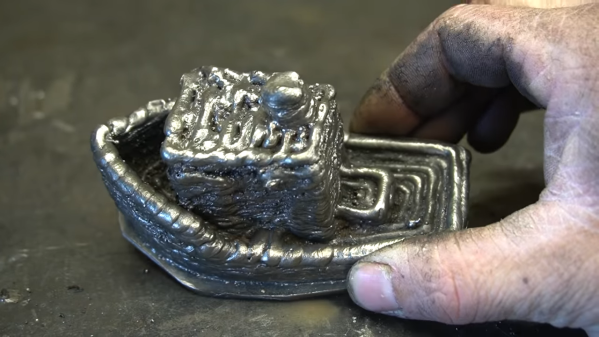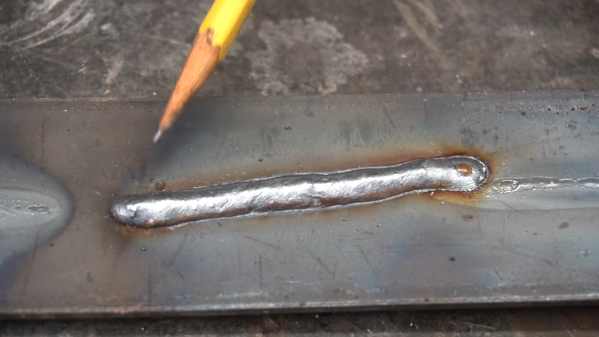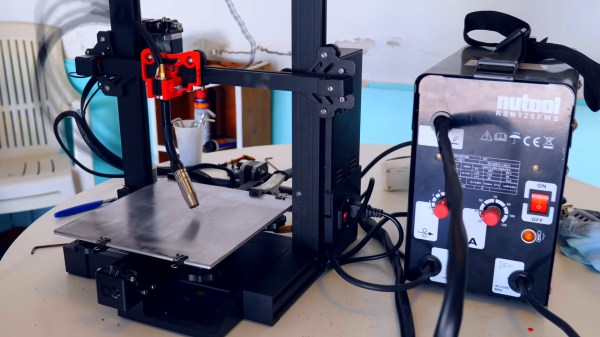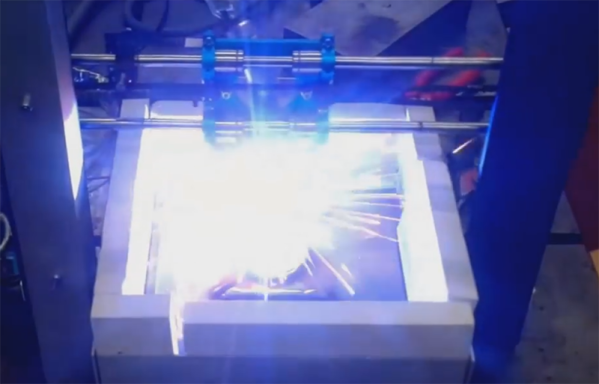A MIG welder is a great tool to have. With machine fed wire and gas protecting the arc, it can make it easy to weld well without requiring a lot of manual skill from the operator. [PROFESSOR PARDAL BRASIL] decided to build his own MIG welder using scrap parts, and it’s an inspiring bit of work.
The build is along the lines of so many YouTube contraptions, using bits and pieces thrown together in oddball ways. A windscreen wiper motor is used to create a wire feeder, with jammed-up ball bearings acting as rollers. Speed control of the wiper motor appears to be via a variable resistor created by moving two plates closer together in a bath of salt water. This enables the wire feed rate to be easily controlled, albeit in a wet and messy fashion. The build includes a device for producing carbon dioxide for use as shielding gas, too. This is achieved by mixing a solution of water and bicarbonate soda with vinegar, and then pumping the resulting carbon dioxide into an inner tube for storage. The power supply for actually creating an arc comes courtesy of car batteries.
The resulting welder is janky as all heck, but it does successfully weld some steel plates together. Job done, as they say. Video after the break. Continue reading “Nifty MIG Welder Built From Scrap”


















